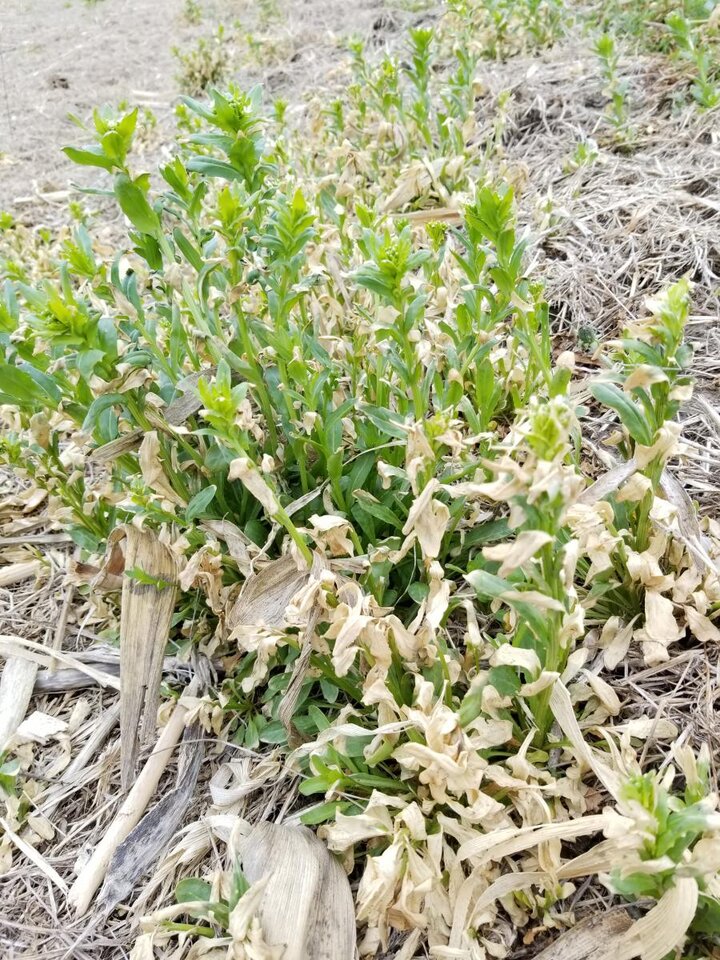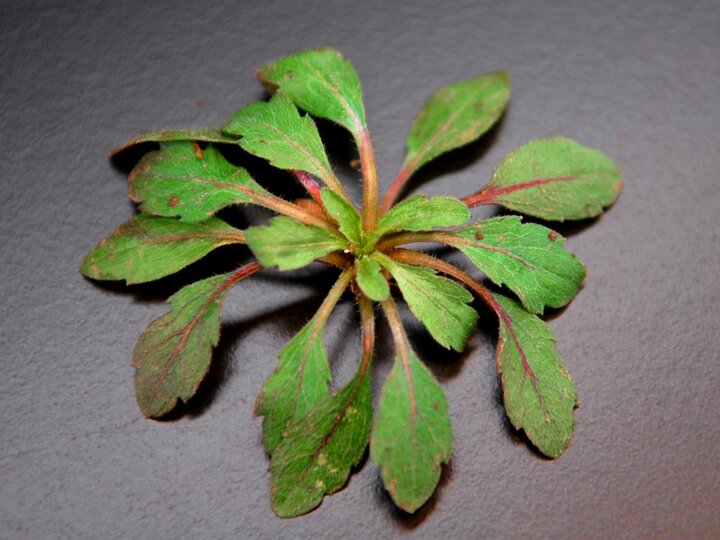With early spring flooding and continued cool-wet weather, early spring burndown and/or pre-emergence herbicide applications for control of marestail were not possible or may have been less effective than expected in many areas.

Even in fields where 2,4-D and/or other burndown herbicides such as paraquat were applied for control of winter annual weeds, wet cloudy weather has reduced the efficacy of these herbicides (Figure 1). This has resulted in marestail control escapes from early burndown herbicides. Additionally, due to continuous rain, corn and soybean planting were delayed in many fields, providing an extended opportunity for marestail growth and establishment.
Even after planting, many corn and soybean fields may have been too wet for a pre-emergence herbicide application. As a result, post-emergence herbicides are the only option for control of marestail. Studies show that most marestail plants emerge during fall and survive the winter by forming basal rosettes (Figure 2); however, significant spring and early summer emergence has also been observed in Nebraska.
Glyphosate applied alone will not be effective for control of glyphosate-resistant marestail in glyphosate-resistant corn and soybean; however, there are several post-emergence herbicide options for corn and a limited number for soybean.

Control in Corn
For post-emergence control of glyphosate-resistant marestail in corn, dicamba-based herbicides and glufosinate (such as Liberty® only for Liberty Link Corn®) atrazine are effective options. Control options for marestail in corn include:
- Acuron or Resicore can be applied early post-emergence when corn is less than 12 inches tall and marestail is less than 4 inches. Other herbicides such as Realm Q or Capreno + atrazine also can be considered.
- DiFlexx is a formulation of dicamba with CSI safener. It can be applied at a rate of 10 to 12 fl oz/acre up to V10 corn. It will provide better corn safety.
- Diflexx DUO is a premix of DiFlexx and Laudis and can provide effective control of marestail.
- Status is a premix of dicamba and diflufenzopyr and can be applied to corn up to 36 inches tall or V10 stage. It may provide about 80% control, depending on size of marestail.
- Clarity can be applied up to 16 oz/acre. Apply broadcast up to the five-leaf stage or 8-inch corn. Apply 8 oz/acre or less broadcast or as a directed spray up to 36 inches tall or 15 days before tassel emergence, whichever occurs first.
- Corn more than about 8 inches tall is more sensitive to dicamba, but use of a directed spray will reduce the risk of injury.
- Liberty can be applied only to Liberty Link corn. It is a contact herbicide, so effective spray coverage is required. (Use a spray volume of a minimum 20 gallons per acre and medium size spray droplets). Liberty can be tank-mixed with DiFlexx to improve marestail control in Liberty Link corn.
- Hornet is a combination of clopyralid and flumetsulam. It can provide up to 80% control, depending on size of marestail.
Control in Soybean
Effective post-emergence herbicides are very limited in soybean for control of glyphosate-resistant marestail because several glyphosate-resistant marestail populations are also resistant to ALS-inhibiting herbicides such as Pursuit, Raptor, Classic, Scepter, etc.
- If marestail is not ALS inhibitor-resistant, then FirstRate can provide about 60-80% control, depending on height of marestail at the time of application.
- Reflex, Flexstar, Harmony SG, Marvel, and Torment also may be good options.
- If Liberty Link soybean is planted, a post-emergence application of Liberty may be effective; however, Liberty can only be applied before Liberty Link soybean starts flowering. Follow application recommendations listed above for greater efficacy.
- New dicamba formulations (FeXapan/Engenia/XtendiMax) can be applied in dicamba-resistant (Roundup Ready 2 Xtend) soybean. Specific nozzle and tank-mixing instructions should be followed.
- Tavium, a new premix of dicamba and S-metolachlor, can be applied post-emergence (up to V4 soybean growth stage or within 45 days after planting, whichever comes first) in Roundup Ready 2 Xtend soybean.
For other herbicide options, refer to 2019 Guide for Weed, Disease, and Insect Management in Nebraska (EC 130).
Always read the herbicide label before applying.
